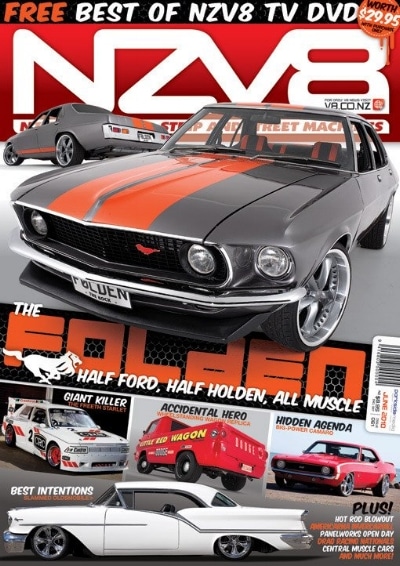data-animation-override>
“What the Trevor Crowe/Rodger Freeth Starlet lacked in size, it made up in Kiwi ingenuity. It has since become an icon of New Zealand Motorsport”
New Zealand ‘big banger’ sedan racing was going through huge changes in the late 1970s and early ’80s. The first half of the 1970s saw domination from heavy metal American iron such as Jim Richards’s ’69 fastback Sidchrome Mustang, the Paul Fahey/Graham Baker/Leo Leonard-driven, PDL-owned 1970 Boss Mustang, Red Dawson’s beautiful gold Kensington Carpets-sponsored 1970 Z28 Camaro, Rod Coppins’s ex-US Trans-Am ’69 Pontiac Firebird, Dennis Marwood’s ex-US Trans-Am ’69 Camaro, and so on.
But by the mid-1970s, teams had clued on to the fact that a small car with a big engine is usually better than a big car with a big engine, being lighter, more nimble, and better on brakes. And so, by the late ’70s, the engines were being pulled from the Mustangs, Camaros, and Firebirds, and squeezed into heavily modified Ford Capris, Cortinas, and Vauxhall Victors. But then, in 1980, a guy in Christchurch by the name of Trevor Crowe decided to push the parameters further still.
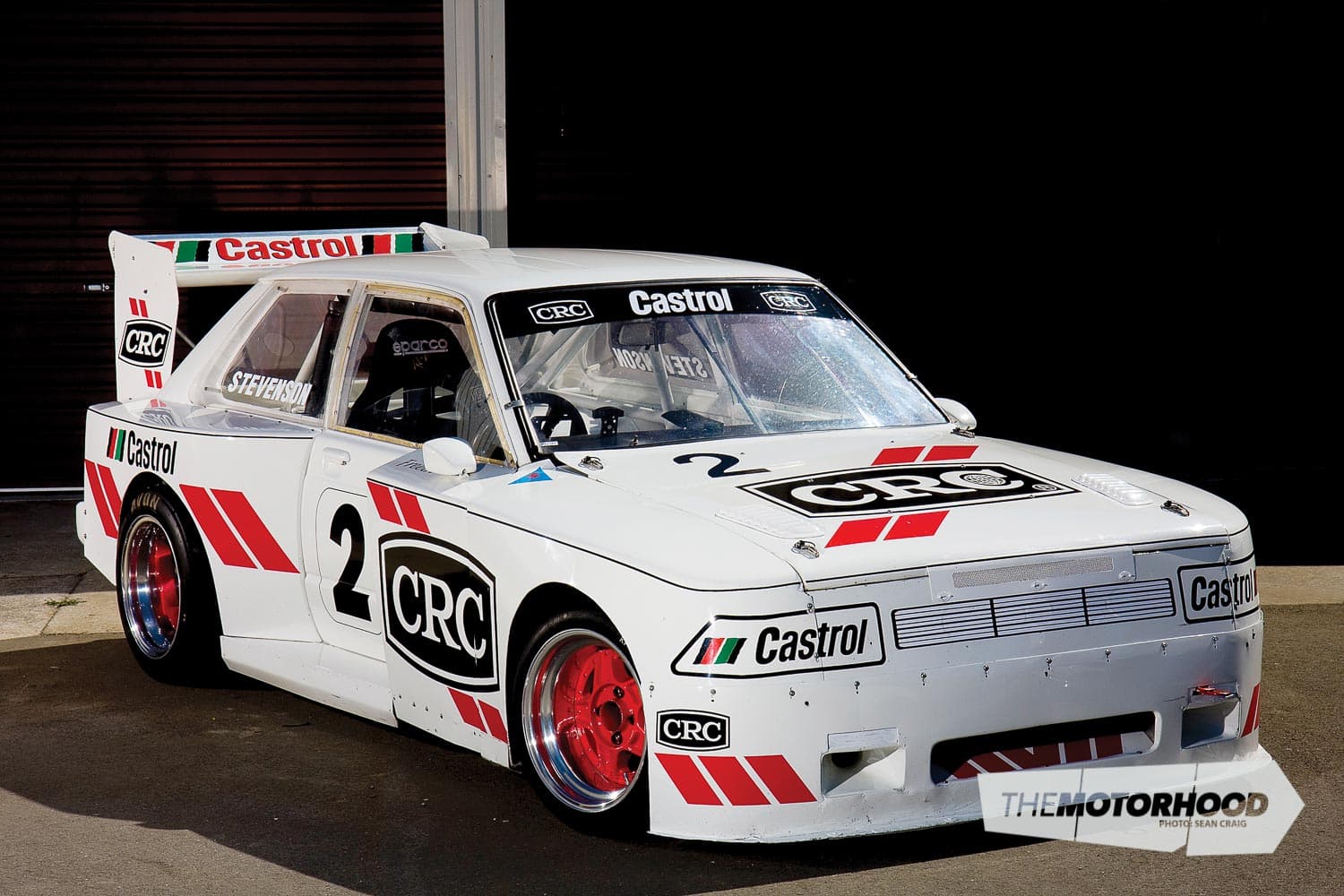
Crowe had been competing in both circuit racing and rallying since the ’60s. In the early ’70s, he built a mad circuit racing car for the South Island OSCA (Open Saloon Car Association) series, in which he fitted a Toyota Corolla coupe with a 327ci small block Chevy. To be blunt, it was wild. And very fast. But its impossibly short wheelbase, combined with the hefty iron block Chevy, made for attention-grabbing handling. Even still, the little Corolla proved to be a pretty successful race car.
Crowe ran the Corolla for a couple of seasons before selling it and moving back to rallying. There he raced a Datsun 1200, then a Hillman Avenger fitted with an Oldsmobile V8.
By 1980, Crowe was looking to build another circuit car to compete once again in OSCA.
Despite the general consensus at the time being that a wheelbase of around 102 inches, such as that of a Capri or Victor, was the ideal length for a V8 sedan, Crowe had other ideas. He maintained that if the car was light enough, with the weight evenly distributed throughout, the wheelbase could be even shorter still, and the car nimbler and faster than a V8 Capri or Victor. And with that, he set about building a Toyota Starlet fitted with an alloy Oldsmobile V8 engine.
Crowe had a limited budget and was always pretty frugal when it came to building cars, opting to use parts he already had lying about. For $400 he picked up the body of a Starlet that had previously been used for rallying and began his new circuit racer around that.
The Olds motor was developed by Bob Slade, who now lives in the US and is still very much in demand for his engine development skills. Slade built the Olds with very clever, very effective dry deck heads. Initially, the motor ran with a four barrel carb, but that was quickly replaced by a Hilborn fuel injection system. It had a 12-inch setback for better weight distribution (the maximum allowed under OSCA rules), was backed by a Muncie four-speed gearbox, and had a Jaguar independent rear end with a limited slip diff.
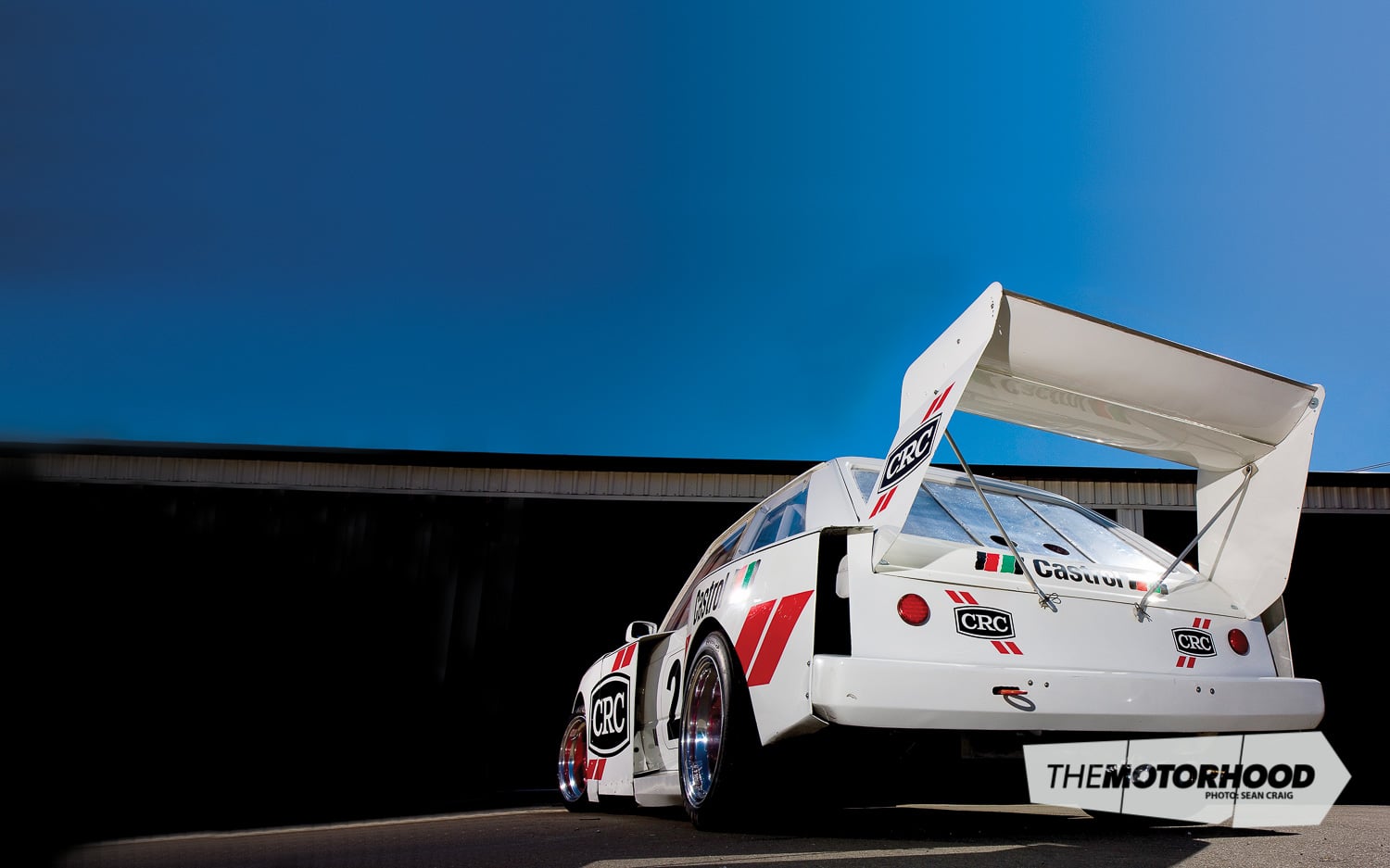
Big opposition
Against the 600-plus horsepower 6.0-litre Chevy motors the opposition were all armed with, the little alloy 4.2-litre Olds was always down on power, but the Starlet was built as a complete package, and emphasis went into making the car as light as it could possibly be. Inside it was fitted with an alloy roll cage, and wherever possible throughout the rest of the car, alloy replaced steel.
The bonnet and boot were fibreglass, and wide fibreglass flares, crafted by Foxton Fibreglass, were created to house the 13×13–inch alloy wheels. Meanwhile, Crowe raided his stockpiles wherever he could to keep costs down, like fitting a Hillman Avenger steering rack, Capri front brakes, and Avenger rear brakes.
When complete, the little Starlet weighed in at under 700kg. Mission accomplished.
The total build time was six months. The Starlet wasn’t quite ready for the start of the 1980/’81 South Island OSCA championship, so Crowe raced his V8 Avenger for the first two rounds.
OSCA had three different classes, based on engine size, and Crowe’s Starlet fitted into Class B, up to 4200cc. The Starlet retired on debut, but then won every class race throughout the remainder of the season, easily winning the Class B championship. But such was the little car’s pace, Crowe was often in amongst the 6.0-litre cars in Class A, the small block Chevy-powered Capris of Inky Tulloch, Ian Munt, and Graham Baker, plus the Chevy-powered Victor of Garry Jenkins and John Osborne’s mighty Camaro. Through incredible consistency, Crowe was also able to take out the overall ’81 OSCA championship.
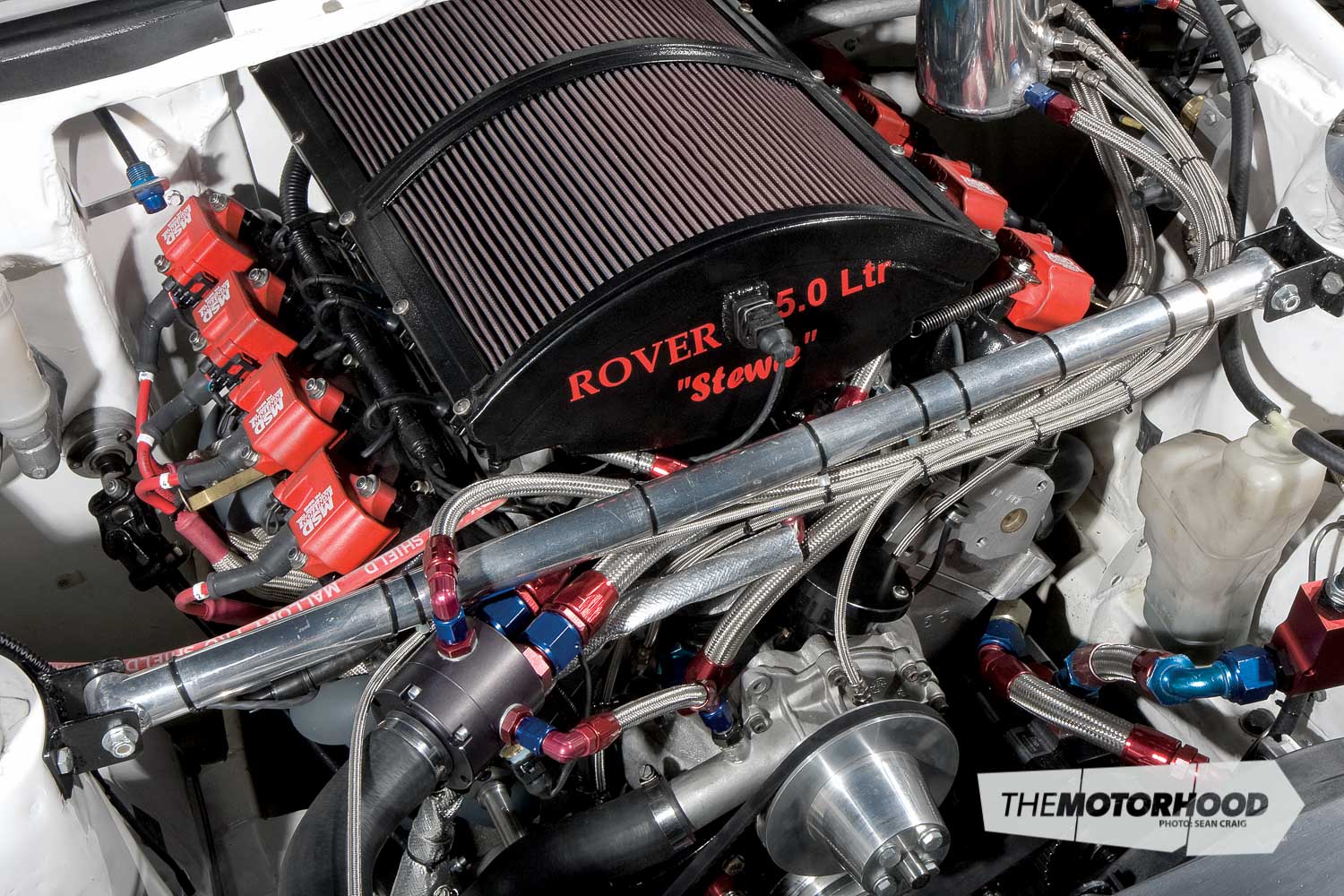
Continual development
Over the next four seasons, the Starlet continued to be developed. Crowe fitted a turbocharger early in its second season, which produced huge power, but it was soon removed, being something of an unknown. The Olds was then fitted with a flat-plane crank for more power. Crowe fitted better brakes, plus a large double-plane rear wing, which became just one of many advantages the car had over its opposition.
The wing was from a March Formula Pacific single seater, left at Crowe’s workshop by a visiting international race team in New Zealand for the summer International Series. Aerodynamics were something of an unknown at the time, and Crowe’s rivals didn’t know how the wing worked, or if indeed it worked at all. Crowe himself was quick to talk it down, saying it was really only there as somewhere to place sponsorship decals. In fact, the wing produced incredible downforce, keeping the stubby little rear end planted firmly on the tarmac at high speeds. At Wigram alone, lap times improved by 2.5 seconds.
Until its final season in 1984, the Crowe/Starlet combination became an almost unbeatable force. No longer just a class car, the Starlet would become the fastest sedan of any type in New Zealand, both in the South Island OSCA series, and in the North Island Sports Sedan series, where it regularly beat some impressive machinery, including Wayne Huxford’s Chevy V8-powered Capri, Ian Algie’s mid-engined V8-powered Alfetta, and the amazing V8 powered Charger of Graeme Addis.
It was an incredible sight. The Starlet didn’t have the legs on the straights that the 6.0-litre cars had. But invariably it would qualify on pole, and be holding a comfortable margin by the time the field hit any straights long enough for the big cars to be a threat.
While the 6.0-litre monsters kicked and bucked, locked brakes and over-ran the corners, Crowe and the Starlet would simply dart off into an unassailable and often unchallenged lead. On the occasions where the Starlet was out-dragged to the first corner, as the race wore on, with its lighter weight, ability to save its tyres and brakes, it would often simply wear down the opposition. It was a phenomenal combination.
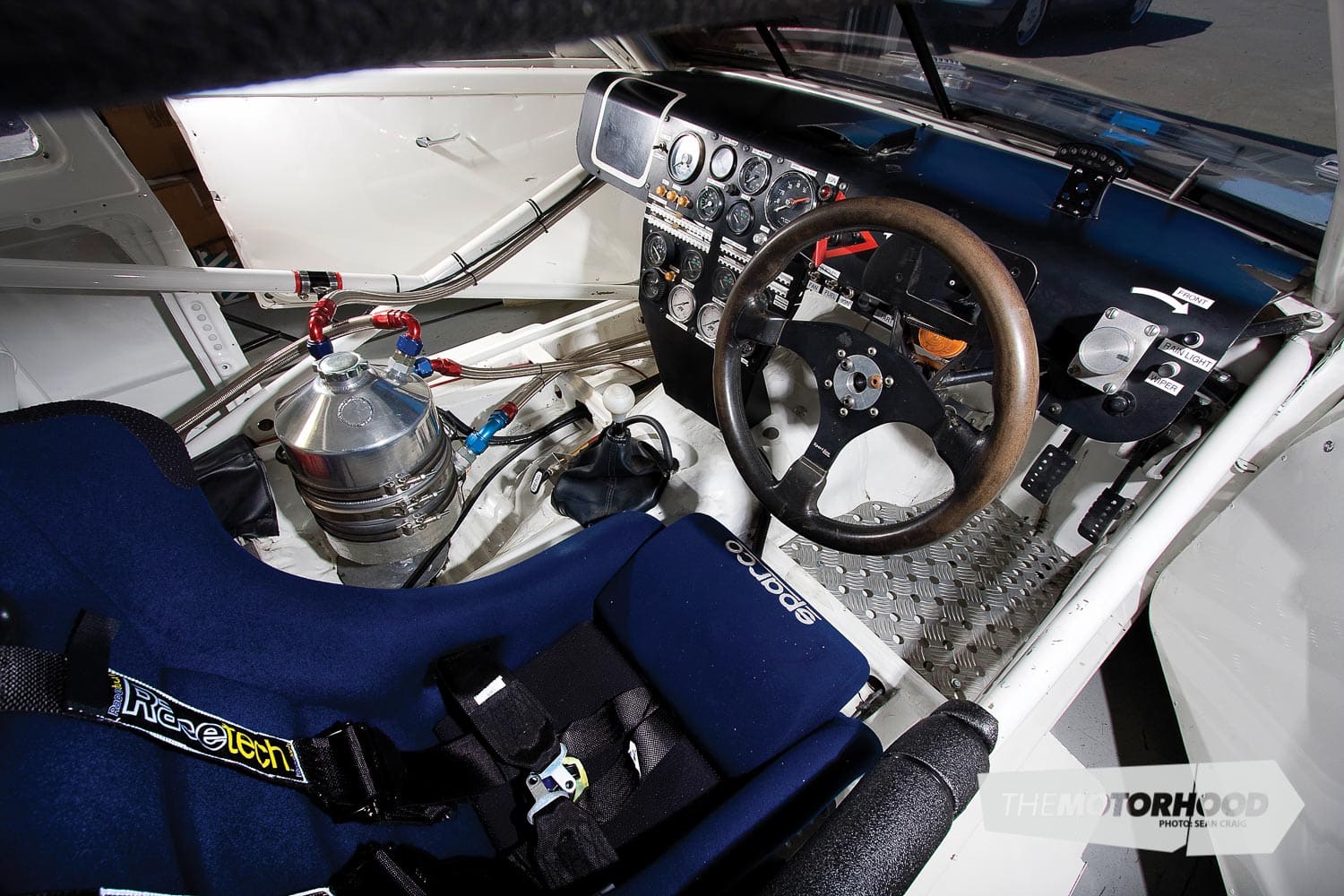
Getting dirty
Being the rally enthusiast he is, Crowe also took the Starlet off-road on one occasion, when he entered it in the annual Ashley Forrest Rally Sprint. He raised the ride height, removed the deep front spoiler and fitted rally wheels and tyres — and proceeded to win the event overall. He also won the OSCA championship again in 1982 and ’84.
Following its ’84 OSCA championship win, Crowe decided to build a new Starlet, for no other reason than he always likes to have a project on the go. The new version would be slightly heavier than the original, using a later model Starlet body, but utilising most of the guts from the first Starlet. The new version featured different style wheel flares, these being designed by Gus Burke, who crafted them out of alloy from which fibreglass molds were taken.
Crowe, by his own admission, didn’t spend a lot of development time on the new car, having begun to lose interest a little in racing the Starlet. He was instead enjoying a new challenge, running a BMW 635CSi in international Group A racing. Yet despite that, he won the OSCA championship again in 1985, and once more trounced the top North Island machines at most events when he crossed the Straight. He also beat off a squadron of radical Australian Sports Sedans brought across for a New Zealand versus Australia grudge-match at the 1987 Wigram racing event. Here he defeated the 600-horsepower machines of Bob Tindall, Des Wall (Toranas), Keith Carling, Bill Attard, Greg Crick (Mazda RX-7s) and Laurie Attard (Ford Capri Turbo), plus the top Kiwi machines.
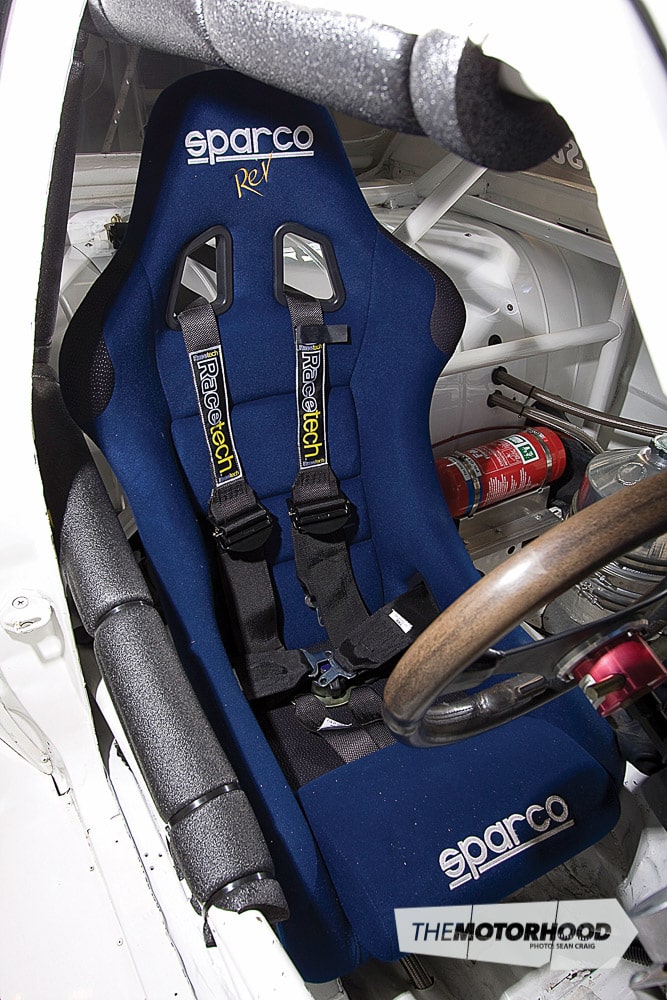
Selling up
Following the ’87 season, Crowe decided to sell the Starlet and concentrate on his Group A commitments. He found the perfect buyer in former motorcycle racer Dr. Rodger Freeth.
Freeth was a brilliant racer and an even better engineer, having gained a Ph.D. in astrophysics. He loved the challenge of tinkering and improving. In 1977, when he was 22, he designed a very effective and very clever set of front and rear aerofoils for his Yamaha TZ750 using Auckland University computers and printing off reams of figures on downforce and drag. The aerofoils became one of New Zealand motorcycle racing’s most controversial experiments and were eventually banned by the governing body NZACU.
In 1987, having retired from motorcycle racing, Freeth purchased the Crowe Starlet. He changed very little about the car for the first couple of seasons, except replacing Crowe’s successful Olds with a Tom Walkinshaw-built Rover V8. One of Freeth’s most interesting developments on the Starlet was the fitting of a video camera inside the car.
It filmed electronic readouts on the dash to record what the car was doing at various times, mostly with the rear suspension, which bottomed out due to Crowe running the car very soft in the rear. Freeth would then play the videos back in the pits to learn more about the car’s behaviour, and how he could improve its handling. This was pretty trick stuff 20 years ago. And it received plenty of attention. Freeth and the Starlet, which was now finished in the colours of long-time sponsor CRC, won the 1988 New Zealand Sports Sedan Championship.
He narrowly lost the title the following season to Wayne Huxford, then returned for the 1990 championship. The Starlet had undergone a major facelift, with the fitting of all newly developed bodywork in an effort to make the car more aerodynamically efficient.
This title went to Kieran Wills in his Chevy V8-powered Mazda RX-7. But the season was notable for the arrival of the Mark Petch/Greg Lancaster-owned Nissan 300ZX turbo, a radical IMSA machine imported from the US. The Nissan was driven by a young Kayne Scott. It was built from the ground up as a race car, its rigid chromoly spaceframe chassis being far more advanced than the locally built machines, which were based around road car bodies.
The Nissan pointed the way forward for modified saloon racing, and within a couple of years, all the top teams had imported their own versions. Freeth himself bought the Kayne Scott Nissan, which he ran for a couple of seasons before swapping his driver’s seat for the codriver’s spot in Possum Bourne’s Subaru rally car.
The Starlet was sold to John Harcourt, who raced it for many years in OSCA before it eventually came into the possession of current owner, John Stevenson. John handed the by-now fairly tired little Starlet over to Motorsport Solutions in Christchurch, which restores and race prepares a wide variety of cars, including mighty Formula 5000 single-seaters, for several clients. The Starlet received a new 4.6-litre Rover block, stretched to 5.0 litres, while the bodywork was fully refurbished and restored to the guise Freeth ran in the 1990 season.
This little Toyota Starlet was one of the last racing saloons built during the 1980s when Kiwi ingenuity still dominated the sport. It is one of a growing number of local racing saloons from our past being restored for future generations to enjoy. John will be racing the car at historic events, where enthusiasts can get to see close up one of the most ground-breaking cars in New Zealand saloon racing history. Fittingly, the first Crowe Starlet is also currently being restored.
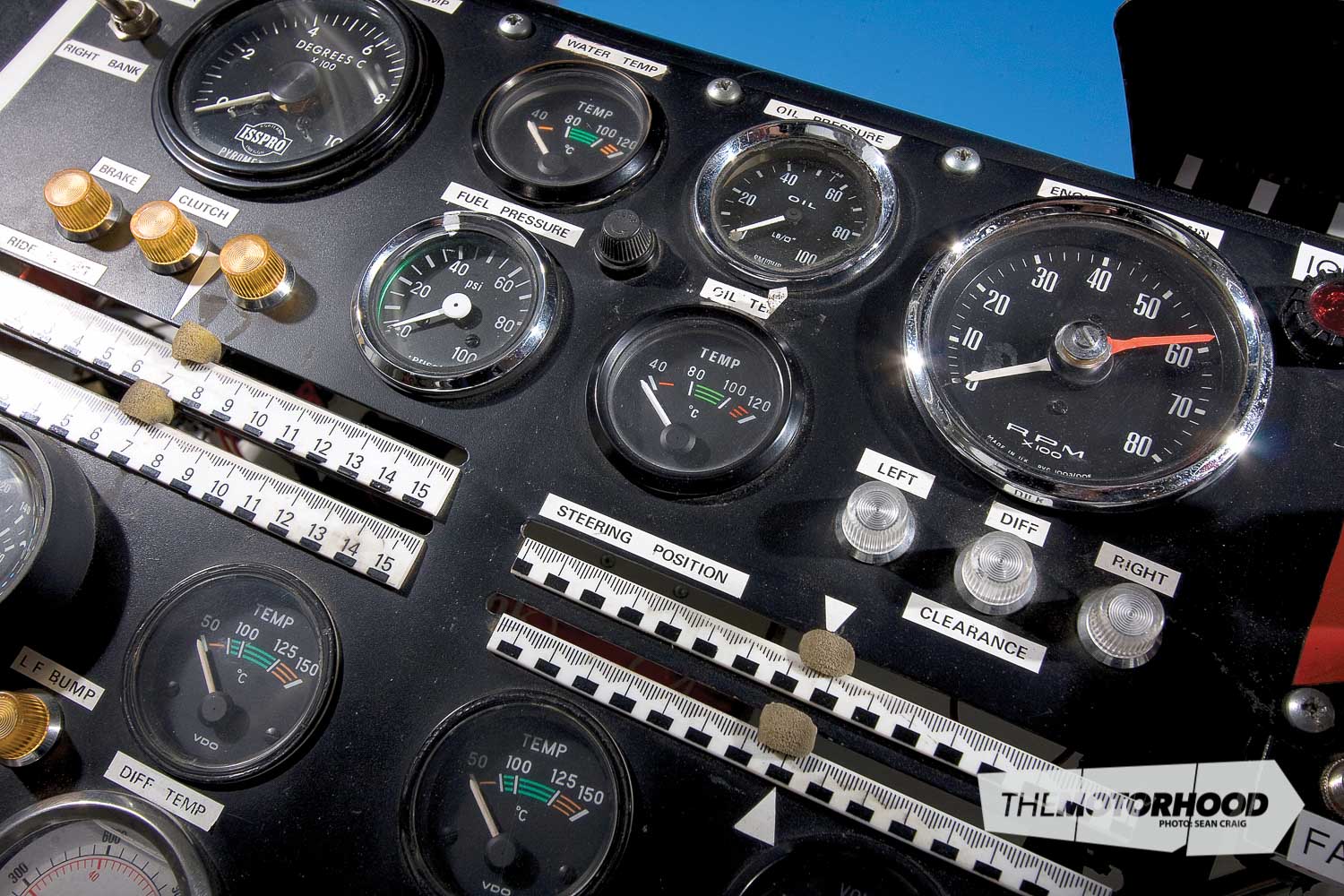
Toyota Starlet OSCA/Sports Sedan
- Engine: 4998cc Rover block, forged pistons, steel crank, Oliver steel rods, roller cam, Wind Cat Stage II heads, 1.6 ratio roller rockers, fuel injection, Bosch pump, Porsche injectors, SX regulator, MSD LS1 coils and leads, Motorsport Solutions exhaust system
- Driveline: Geartrac Sierra Cosworth 5-speed gearbox, triple-plate clutch, Speedway Engineering quick-change rear
- Suspension: Coil-over MacPherson strut front, coil-over 4-link rear, Koni shocks and Eibach springs all-round
- Wheels/Tyres: Arrow wheels, Avon slicks
- Performance: 512hp
This article originally featured in the June 2010 issue of NZV8 (Issue No. 61). You can pick up a print copy or a digital copy of the magazine now:
